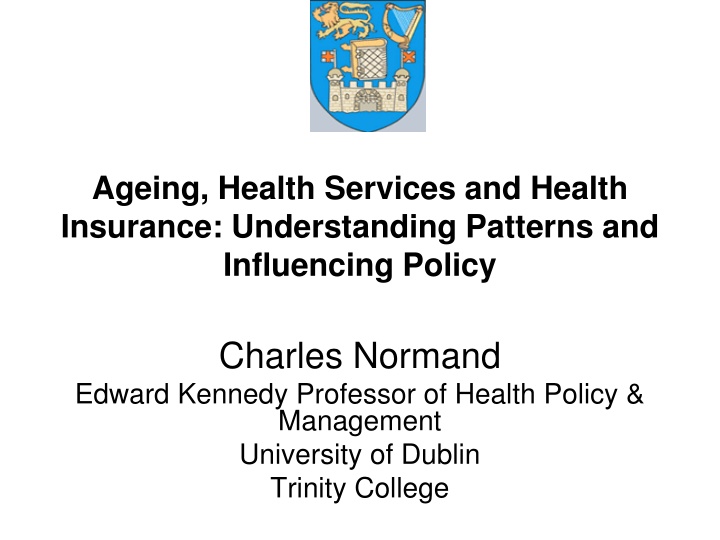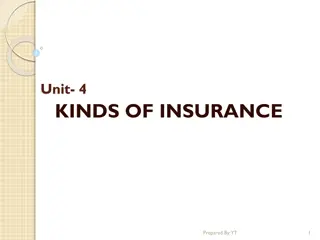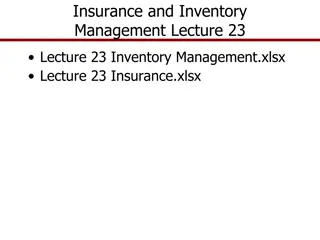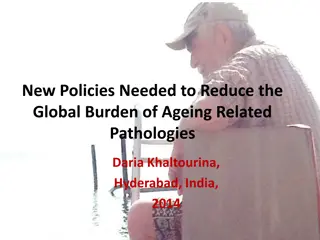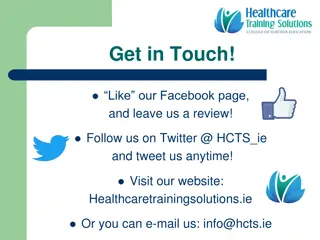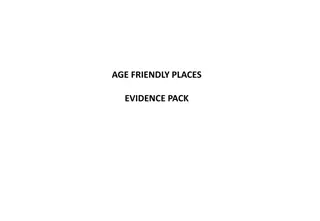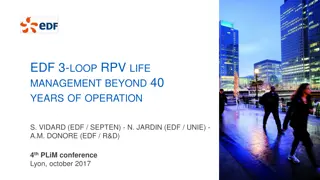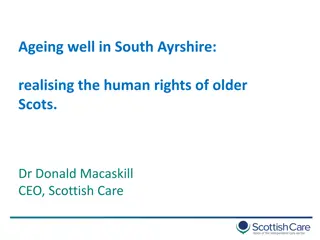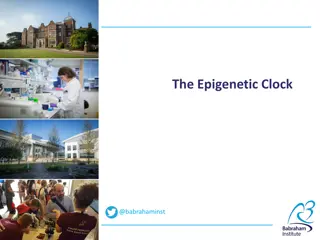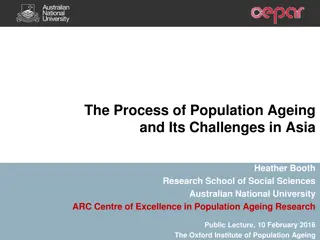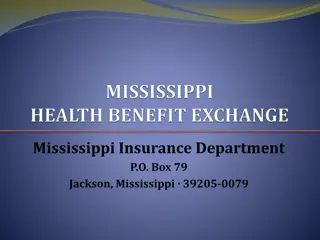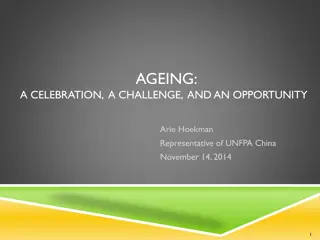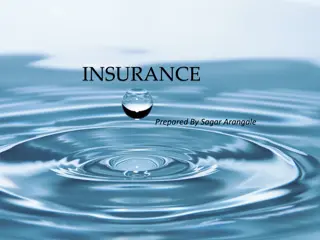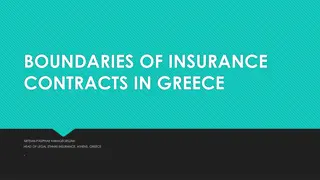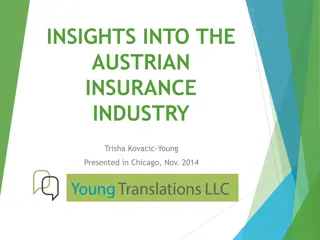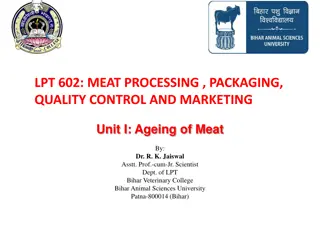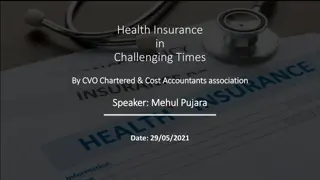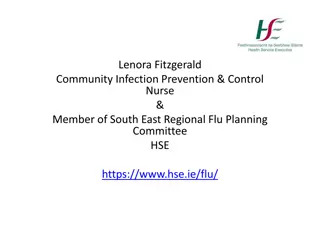Ageing, Health Services, and Insurance: Patterns & Policy Influence
Delve into funding & access to health services in Ireland, usage patterns tied to age/illness, evidence-based policy impact, challenges in universal health insurance, and non-capital health financing dynamics in Ireland from 1980-2010. Explore the coverage distribution of medical cards & private health insurance by age, entitlement status based on self-rated physical health, and service utilization in correlation with age & chronic illnesses.
Download Presentation

Please find below an Image/Link to download the presentation.
The content on the website is provided AS IS for your information and personal use only. It may not be sold, licensed, or shared on other websites without obtaining consent from the author.If you encounter any issues during the download, it is possible that the publisher has removed the file from their server.
You are allowed to download the files provided on this website for personal or commercial use, subject to the condition that they are used lawfully. All files are the property of their respective owners.
The content on the website is provided AS IS for your information and personal use only. It may not be sold, licensed, or shared on other websites without obtaining consent from the author.
E N D
Presentation Transcript
Ageing, Health Services and Health Insurance: Understanding Patterns and Influencing Policy Charles Normand Edward Kennedy Professor of Health Policy & Management University of Dublin Trinity College
Outline of Presentation Funding health services and funding services in Ireland Patterns of use of health services and social care Access to and use of health care age or illness Using evidence to influence policy on access to care Universal health insurance, ageing and access to care Challenges.
Nothing comes from nothing! Risk Based Insurance Households Government Income based insurance Providers Flat rate insurance
Non-Capital Health Financing in Ireland Its mainly tax Insurance is small proportion overall Insurance is for the old, the rich and the fit.
Non-Capital Health Financing in Ireland (1980-2010)
Medical card and private health insurance coverage by age Entitlement Status Medical Card Only Dual Cover Health Insurance Only No Additional Cover Total All Medical Cards All Health Insurance Age Group 65-69 32% 17% 42% 10% 100% 49% 59% 50-59 60-64 70-79 80+ All 50+ 36% 16% 37% 11% 100% 52% 53% 24% 5% 52% 19% 100% 30% 57% 31% 9% 51% 10% 100% 39% 59% 52% 39% 8% 1% 100% 91% 46% 68% 29% 3% 0% 100% 97% 31% Source TILDA 2011
Entitlement Status by Self Rated Physical Health (50+) Self Rated Health Not Covered Medical Card Medical Insurance Total Excellent 15 9 22 14 Very Good 29 22 35 28 Good 35 34 31 33 Fair 17 26 10 19 Poor 3 8 2 6 Source TILDA 2011
Service use Services are used by sick people Services are used near the end of life Both of these are correlated with age, but age in itself is not very important More people (but lower proportions) are living with a chronic illness (or more than one) More people (but lower proportions) are living alone Use and cost of care is higher for people living alone.
Percentage who use each service by age Age GP Visit OP Visit ED Visit Hospital Admission 50-59 81 36 14 11 60-69 89 43 15 13 70-79 95 46 17 17 80+ 95 37 15 15 TOTAL 87 40 15 13 Source TILDA 2011
Nights in hospital for those who were admitted by age Age 1-4 % 5-9 % 10-14 % 15-19 % 20-29 % 30-39 % 40+ % 50-59 54 25 9 2 5 2 3 60-69 44 27 15 5 5 1 4 70-79 40 25 14 4 8 3 6 80+ 35 25 16 3 10 5 6 TOTAL 45 27 12 3 7 3 4 Source TILDA 2011
Percentage of those in POOR HEALTH who use each service by age Age GP Visit OP Visit ED Visit Hospital Admission 50-59 94 61 29 23 60-69 96 64 25 24 70-79 98 64 27 27 80+ 96 45 22 25 TOTAL 96 61 26 25 Source TILDA 2011
Percentage who use community and social services by age 50+ Service 50-59 60-69 70-79 80+ Total PH Nurse 2.2 3.7 11.8 24.9 6.6 OT 0.9 1.3 2.2 3.2 1.5 Chiropody 1.3 2.2 9.8 15.6 4.5 Physio 3.9 5.1 7 6.9 5.2 Home help 0.5 1.3 6.2 19.9 3.5 Meals on W 0.1 0.3 2.4 3.3 0.9 Day care 0.3 0.6 1.6 6.8 1.2 Source TILDA 2011
Access to health care ageism or good clinical practice? 1 Unpublished Canadian data suggest some of each There are good reasons for not providing services where co-morbidity and limited capacity to benefit make an intervention less useful Some evidence that some older people choose not to have some treatments.
Access to health care ageism or good clinical practice? 2 However access to useful treatment is often not offered Study of dialysis in 80+ showed good outcomes and better QOL than for younger people those who were otherwise well did well, those who had multiple health problems did badly Key issue to shift away from age as criterion for rationing or setting priorities.
Access to health care ageism or good clinical practice? 3 Unpublished Scottish data suggest access to potentially life extending treatments continue but QOL enhancing ones do not neat the end of life (cf CABG and Cataract) Most growth in service demand reflects more use by older people and not more older people growing expectations are more important than ageing in driving increases in demands for services.
Using evidence to influence policy on access to care Ageing per se is not a large driver of increasing health care costs, but will lead to significant rises in needs for community and social care Converging life expectancy of men and women is tending to reduce the growth in costs of care Evidence from TILDA shows that older people are a major resource for caring for older and younger people Evidence from TILDA suggests that use of services is affected by medical card and insurance status.
Universal health insurance, ageing and access to care 1 UHI is a mechanism not a policy the policy is the U and how U is the insurance is the question UHI can be associated with increases (or decreases) in efficiency, so can allow more for less Overall burden of paying will still fall on households, but distribution of burden may change Defining the benefit package is still the big challenge Diversity and choice may come at the expense of universalism and equity.
Universal health insurance, ageing and access to care 2 Current private insurance redistributes from well to sick Poorer younger insured subsidise older richer ones Community rating rules protect many, but also exclude many poorer working people could afford normal health insurance but cannot afford community rated insurance The advantage of UHI is the transparency of funding, but does not guarantee better access.
Universal health insurance, ageing and access to care 3 Compared to present system: 60% of those over 80 should see better access to hospital care, and 3% to GP care 41% of those 70-79 will see improved access to hospital care and 9% to GP care 43% of those in their 50s will see better access to hospital care and 70% to GP care.
Challenges Making chronic disease management across all levels of care a reality Shifting care closer to users where feasible and to specialised providers when necessary Removing perverse incentives to patients and providers for wasteful use of services Accepting that rationing is inevitable and necessary and must be done fairly Recognising options and choices are complex.
End Thank you for your attention
